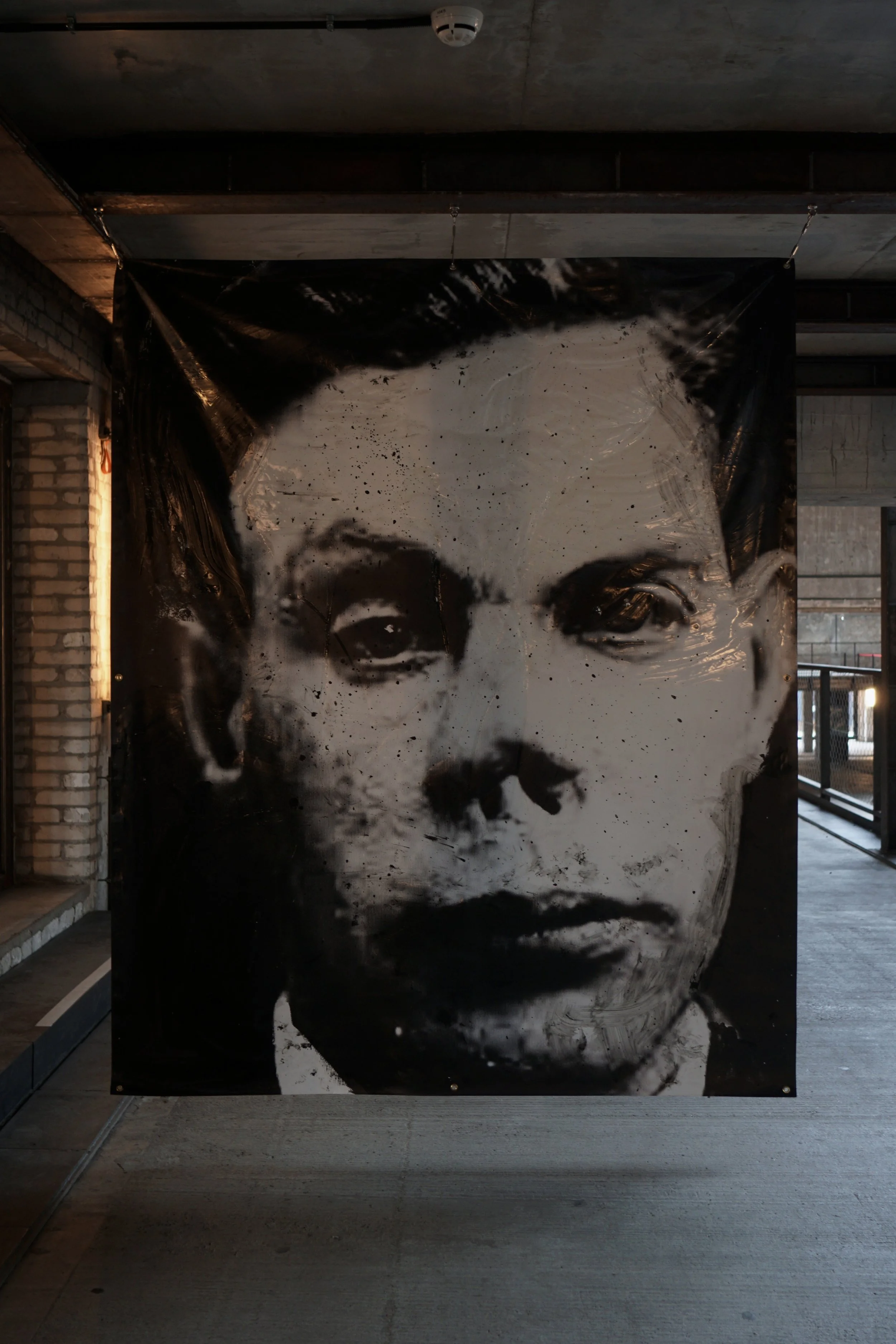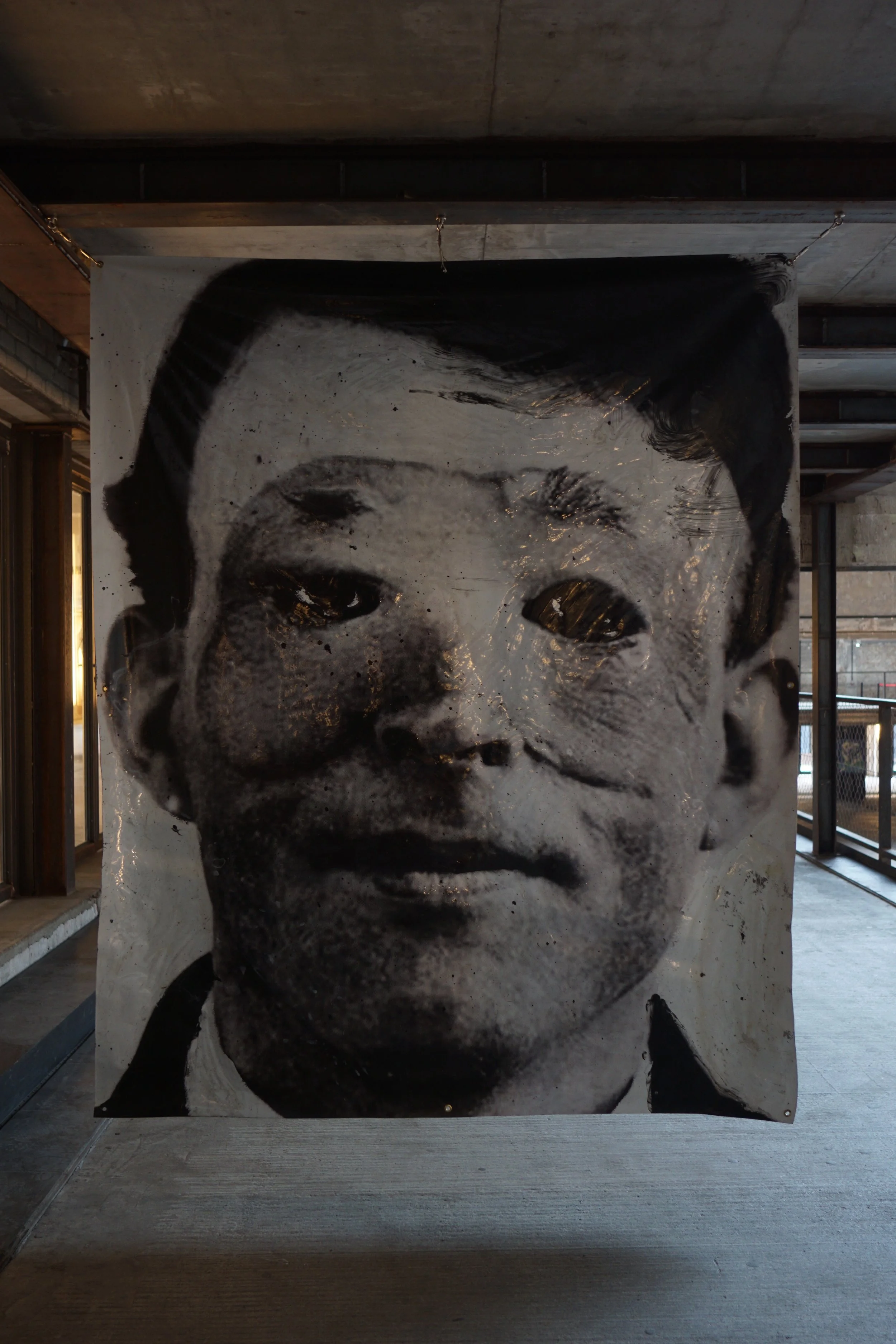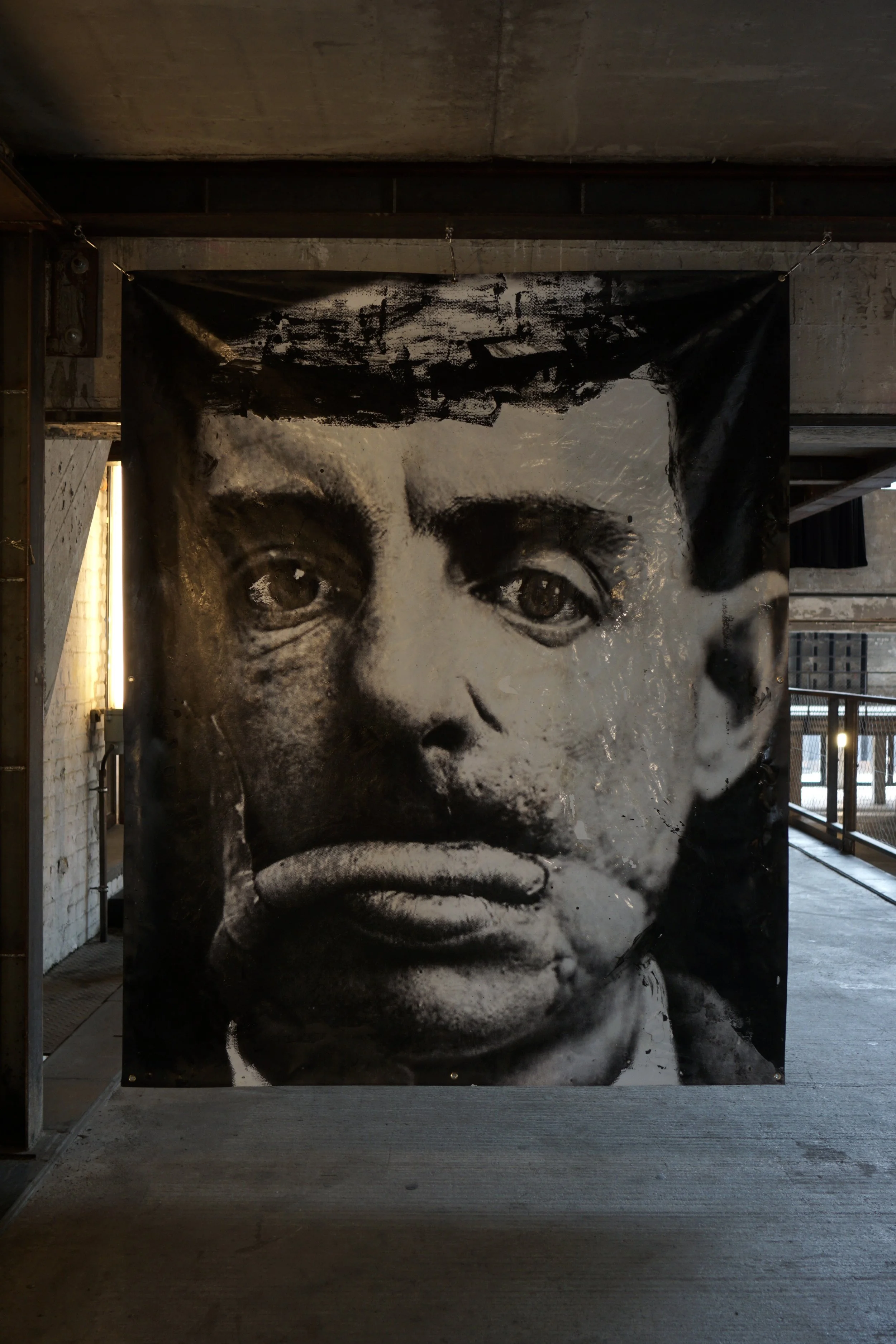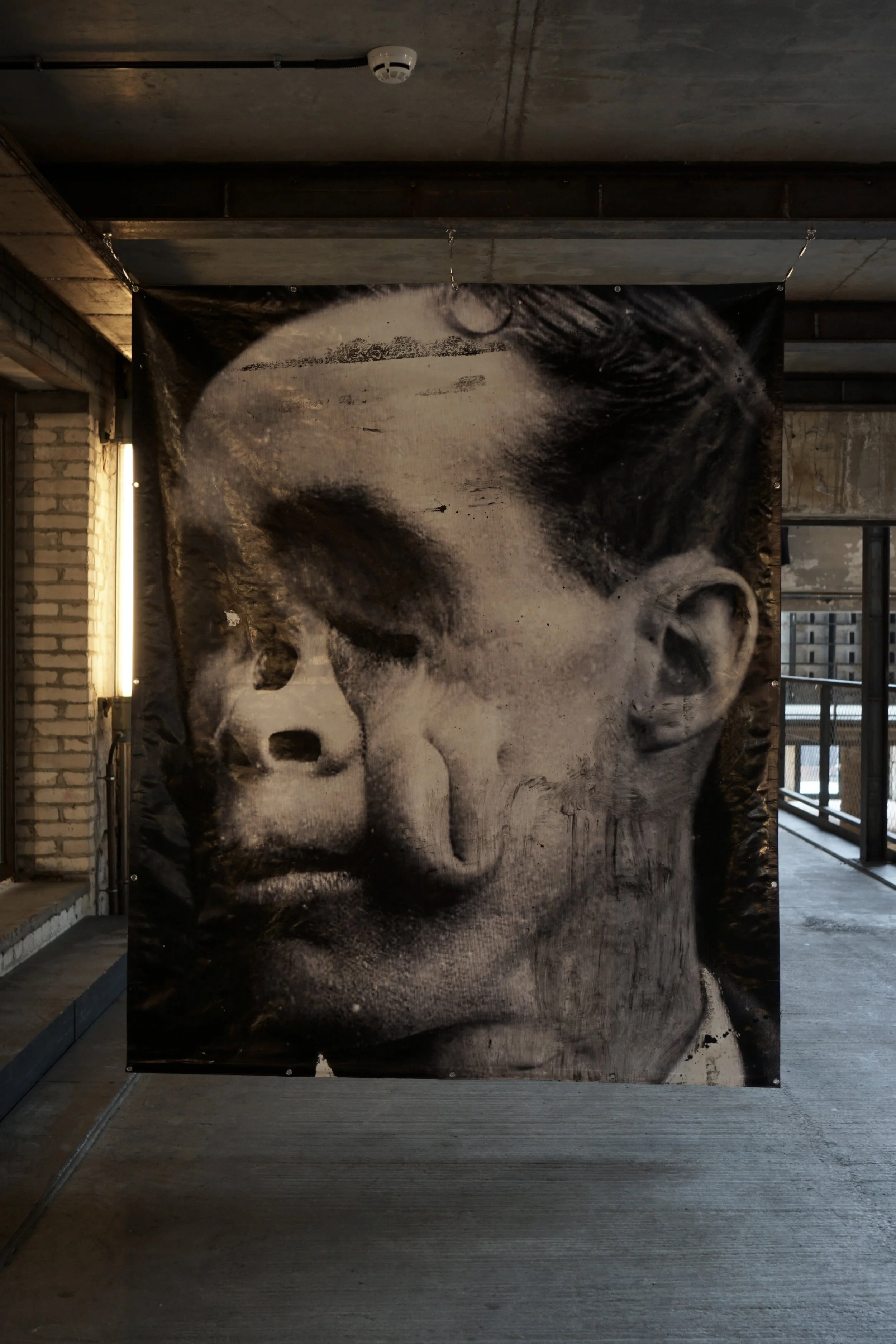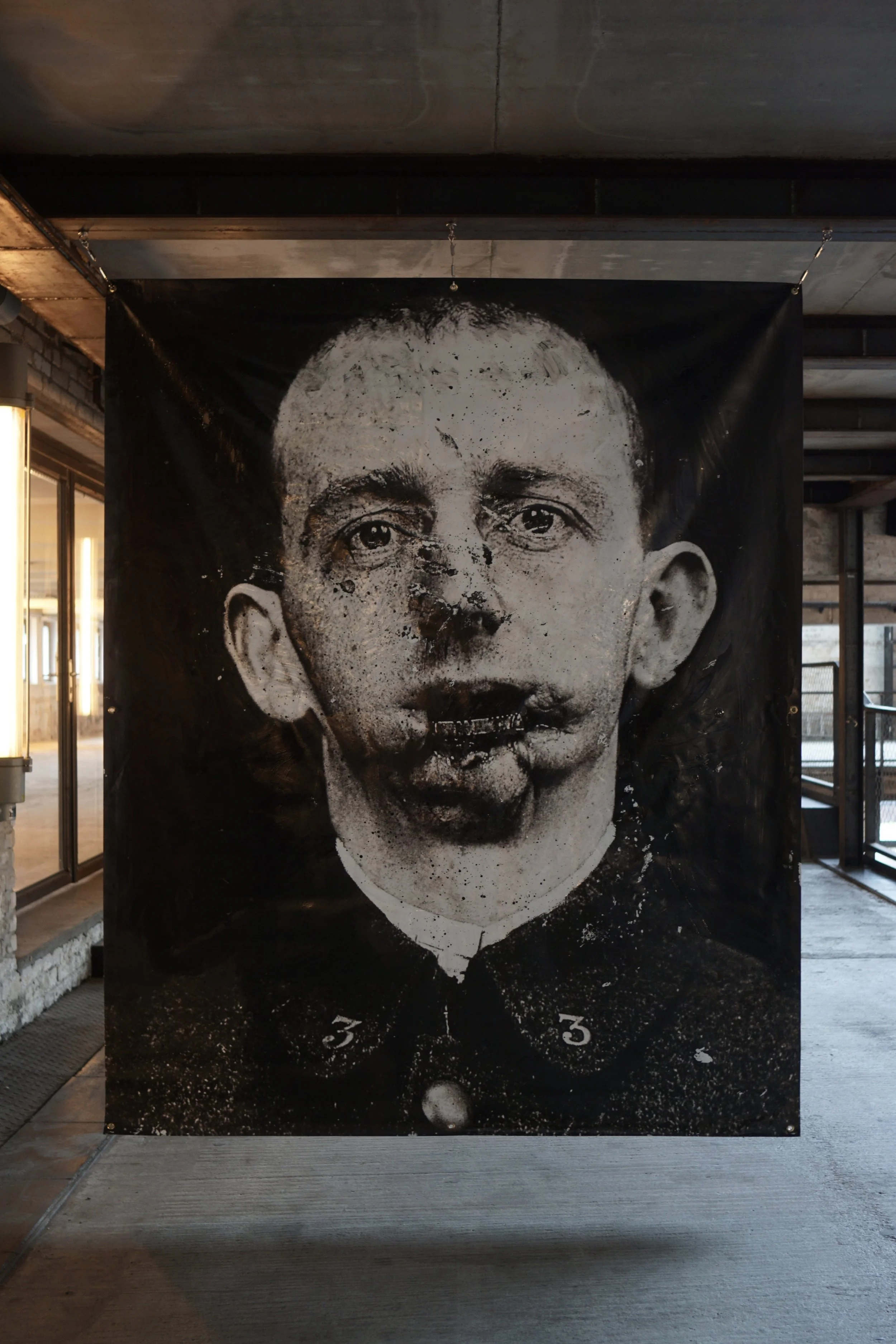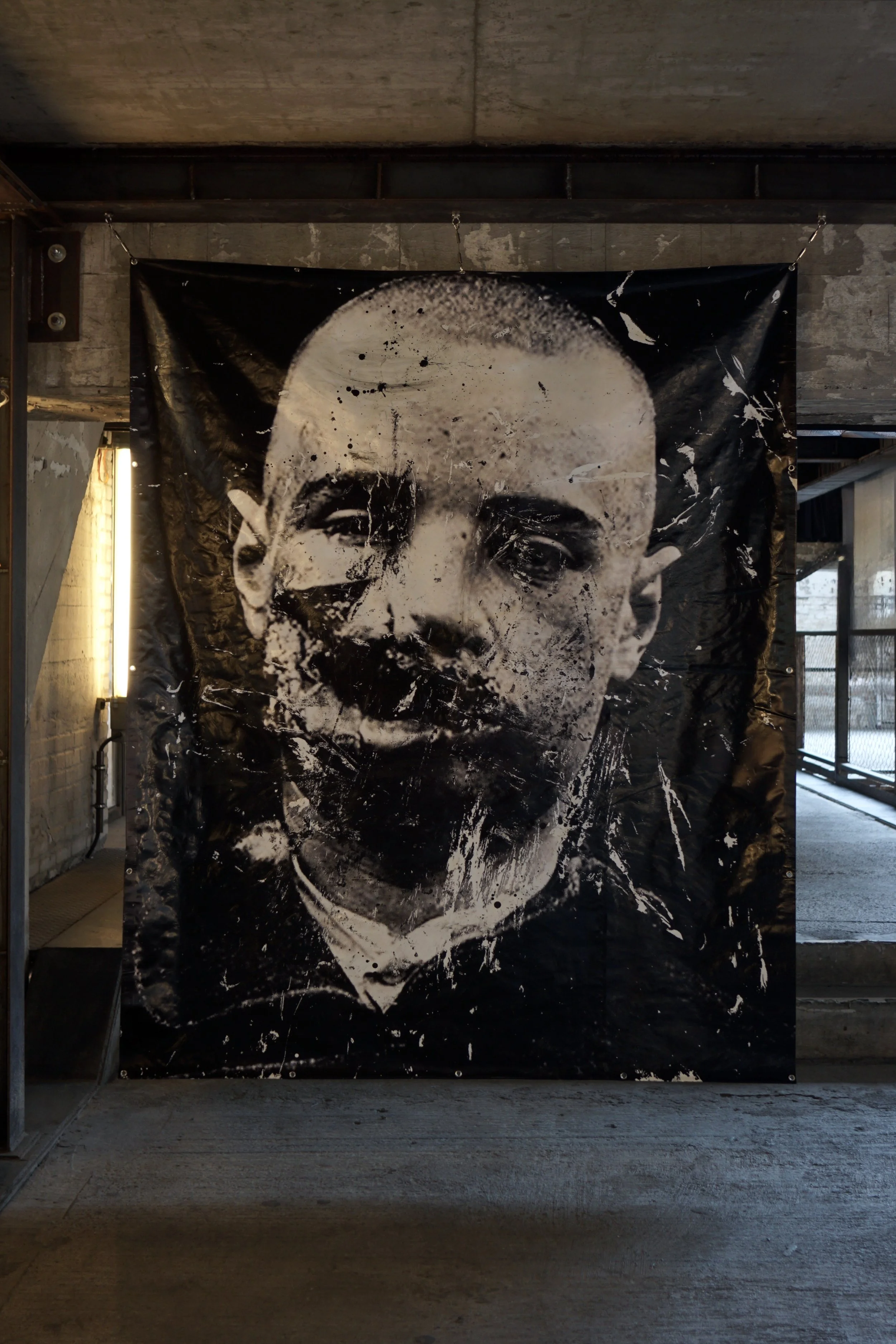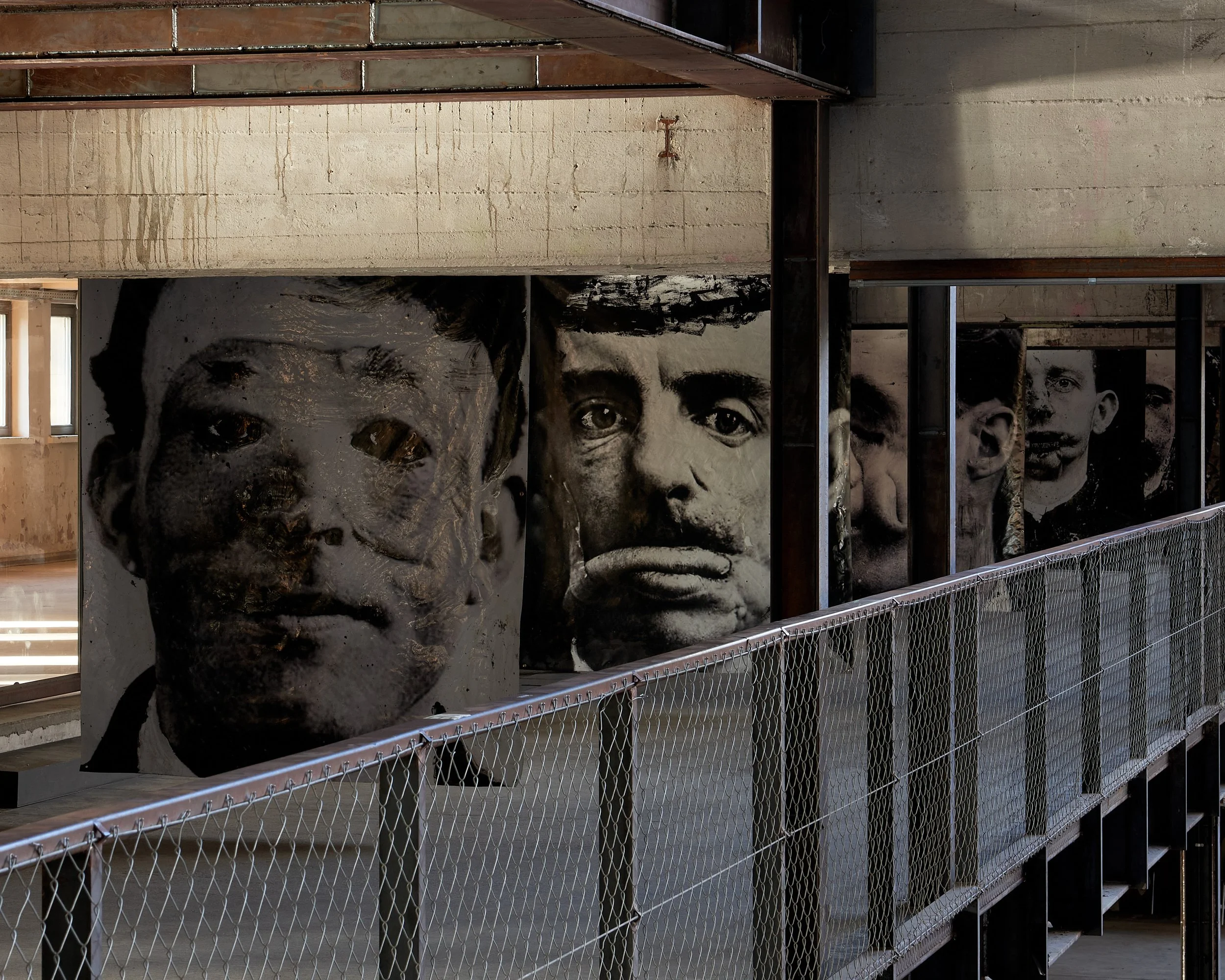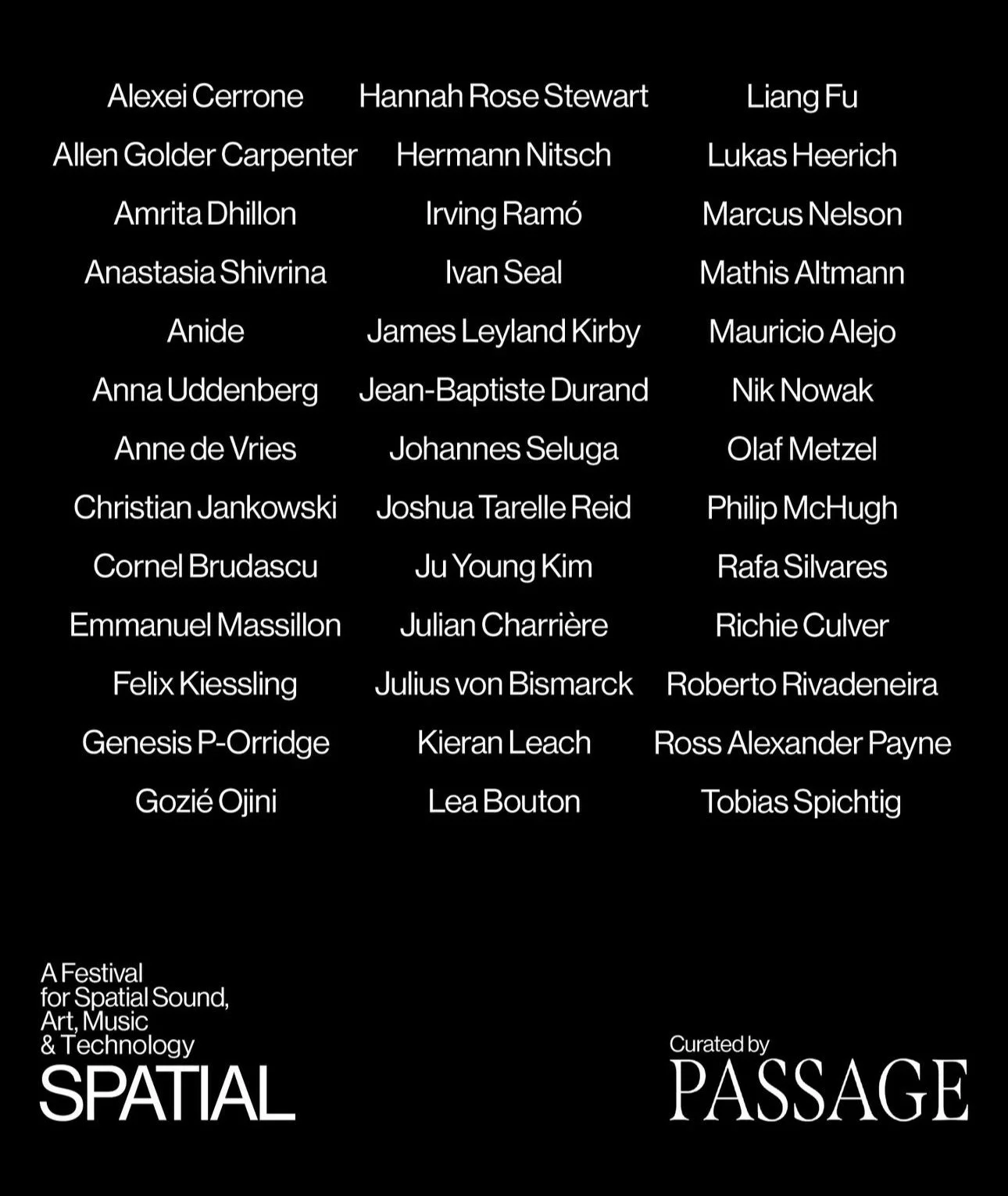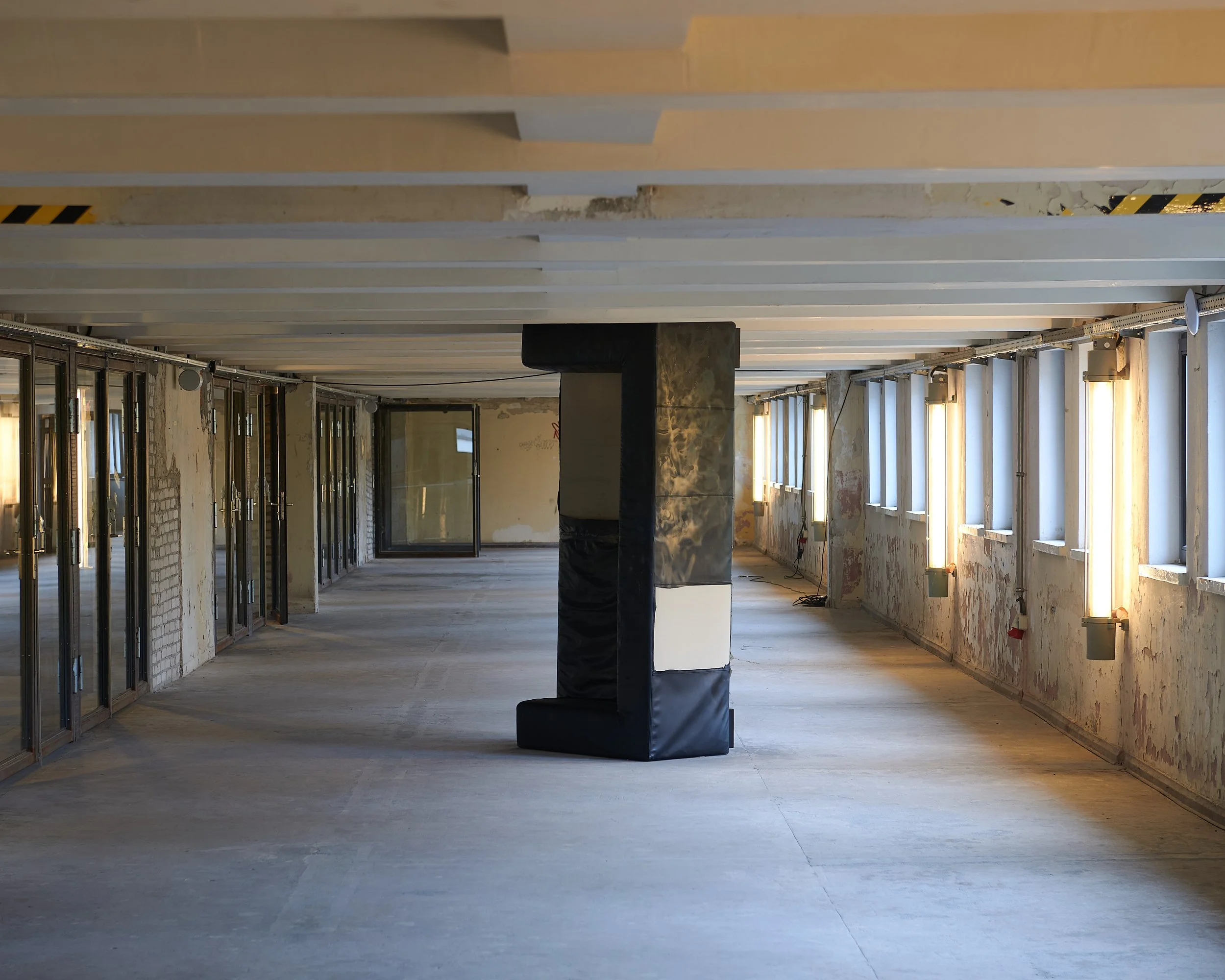Disfiguration work.
This body of work began in 2019 with a series of drawings, portraits and manipulated photography that depict World War I soldiers who underwent some of the earliest forms of facial reconstruction under the care of surgeon Harold Gillies.
The choice of PVC is not simply practical or aesthetic; it introduces a critical conceptual dimension. As a synthetic material, it evokes the plasticity of reconstructed identity. Its clinical sheen and artificiality mirror the ways in which modernity intervenes upon the body - reshaping not only appearance but also memory and perception.
By translating painted surfaces through photography and industrial print, the works trace a layered process of mediation. Each stage - paint to pixel to ink on polymer - becomes an echo of transformation, a kind of metaphorical surgery that questions how we see and remember altered or damaged faces within the wider contexts of war, media, and technological progress.
These prints are not reproductions but new objects in their own right. I hrough their material evolution, they embody the tension between the organic and the artificial, the handmade and the manufactured. Across the six works, this shifting dialogue between image and substance becomes a reflection on reconstruction itself - not as restoration, but as a continual act of reinvention.
Latex, ink, resin + acrylic on PVC
220x180cm
2025
The black leather sofa is not neutral. It evokes a history of middle-class desire for markers of luxury and permanence, the mass-produced approximation of elite taste. Yet its resonance extends beyond the domestic sphere. The sofa is also a familiar prop of the social underbelly: after-parties, club back rooms, and liminal spaces where intimacy and excess blur. In these contexts, the leather sofa accrues new layers of meaning-worn upholstery, cigarette burns, stains that speak of exhaustion, vulnerability, and fleeting collectivity. In such spaces, the sofa witnesses both the celebratory and the abject, the promise of belonging alongside the inevitability of disintegration.
Culver's act of tipping the sofa onto its side is therefore doubly destabilizing. It denies not only the domestic fantasy of comfort but also the illicit sociality of nightlife. The sofa is caught between these registers, both aspirational and degraded, both private and public. Its undercarriage and seams, made visible by its orientation, expose the artifice of its construction, echoing Arte Povera's valorization of material rawness while recalling Duchampian strategies of defamiliarization.
Placed upright in the gallery, the sofa becomes an accidental monument. It is monumental not through grandeur but through its sheer obstinacy-an object of leisure that refuses to provide leisure, a witness to intimacy that now faces the void of the white cube. In its absurd yet imposing stance, the sofa crystallizes Culver's ongoing interest in aspiration, and disillusionment. By recontextualizing an object that shuttles between living rooms and after-hours spaces, Culver invites the viewer to confront the unstable cultural codes embedded in everyday things and the precarious desires they represent.
Untitled (sofa)
Acrylic, Tape, lacquer, leather sofa
Dimensions variable
2025
